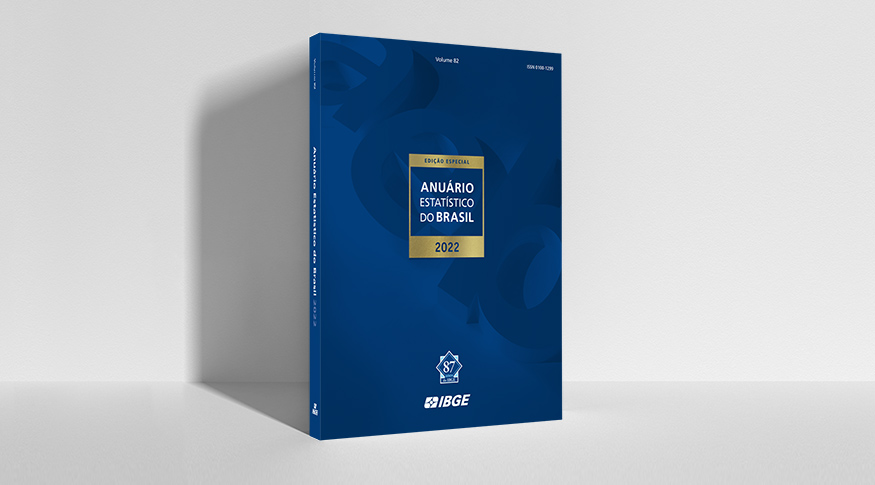2022 Yearbook
IBGE launches 82nd Statistical Yearbook of Brazil and announces digital version for 2024
May 29, 2023 10h00 AM | Last Updated: May 29, 2023 09h02 PM

As part of the celebration for its 87th anniversary, the IBGE releases today (29) a new edition of the Statistical Yearbook of Brazil (AEB), with demographic and social indicators collected by the Institute itself, as well as economic and macroeconomic indicators from external sources. This 82nd yearbook will be the last one as a printed volume. From 2024 on, the traditional publication will be digital, interactive, and not only in PDF format.
“With this transition from printed to digital format, we intend to increase the AEM’s visibility and reach a bigger number of users,” says Isabela Torres, executive coordinator of the publication. “Its inclusion in a website is already in progress, and that can increase the reach of the material,” Ms. Torres adds.
The publication is divided into seven sections: characterization of the territory; demographic and socioeconomic characteristics of the population; aspects of agricultural activity and forestry; aspects of industrial activity; aspects of service activities; indexes, prices, costs and salaries; and macroeconomic aggregates.
Some highlights of the surveys are the increase, in 2022, of the number of patent applications presented (27,139) against 2021 (26.921), reported by the National Institute of Industrial Property (INPI), and the increase of cattle inventory in 2021, informed by the municipal Livestock Survey (PPM 2011-2021).
One of the tables that illustrate the publication shows the behavior of air traffic in Brazil between 2021 and 2011, with a focus on the number of hours flown in 2021 and 2022, considering both national and international air traffic. It is possible to observe a significant increase in the number of hours flown from one year to the other, thus reflecting the resumption of activities in the sector after the Covid-19 pandemic. Domestic flights increased 32.3% in terms of hours flown, and went from 982,958 , in 2021 to 1,300,372 , in 2022. International air traffic, in turn, recorded an even bigger increase, of 140.8%, having changed from 62,529 hours flown in 2021 to 150,615, in 2022.
Each one of the seven topic encompassed by the publication has a glossary with the concepts investigated in related studies and surveys, as well as standardized references of the sources. Additional files are also available at the Library page on the IBGE website, thus enriching even more the content of this yearbook.
“We have made continuous efforts in research and benchmarking with other institutions and yearbooks from other countries, and have also bounced ideas with our informants, collaborators and users, to improve our product more and more every day,” Ms. Torres adds.
Click here and listen to the IBGE Minute on the 87 years of the Institute



















